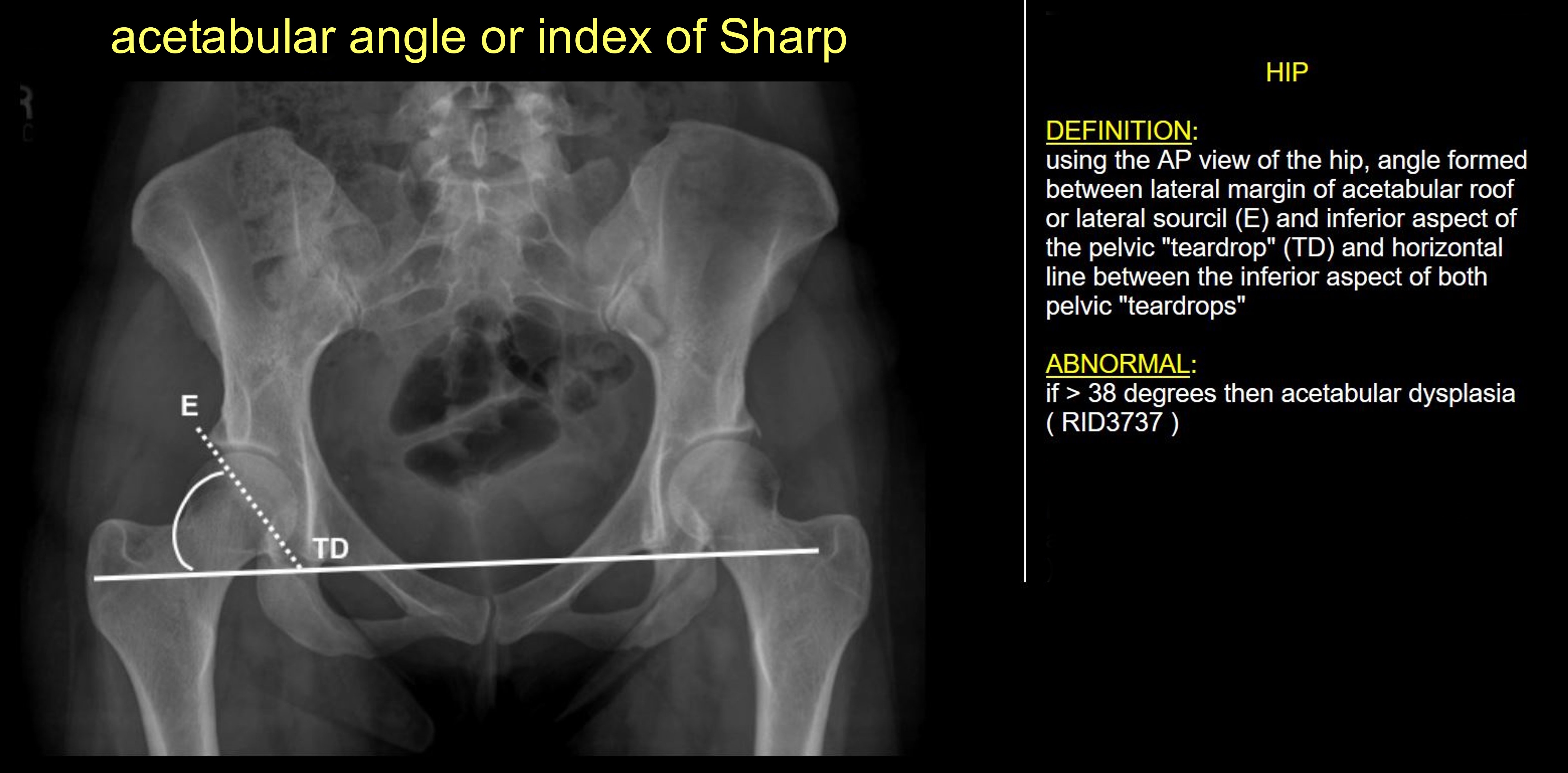Roof arc angles are used to assess the size of the intact portion of acetabulum.
Acetabular roof arc angle.
Defined as 45 on ap obturator and iliac oblique views.
Considered stable if the fracture line exits outside the weight bearing dome of the acetabulum.
Computerized tomography ct of the superior 10 mm of the acetabular articular surface evaluates the area equivalent to roof arc measurements of 45.
These roof arc angle values may be used as a surgical guideline for an acetabular fracture around the weight bearing area.
Roof arc angle angle between vertical line through femoral head and line through fracture.
The acetabular angle is a plain film measurement used when evaluating developmental dysplasia of the hip ddh which is measured between hilgenreiner s line and a line parallel to the acetabular roof.
In acetabular fracture a medial roof arc angle less than 46 an anterior roof arc angle less than 52 or posterior roof arc angle less than 61 is considered to be involved in a weight bearing area.
Normal values in adults the normal range is 33º to 38º.
3 article feature images from this case.
The acetabular angle using hilgenreiner s line should be less than 28º at birth.
Application of the study results showed that 45 45 and 62 from the previous studies are the most appropriate medial anterior and posterior acetabular roof arc angles without involvement of the absawba respectively.
Helps to define fracture pattern stability.
23 24 25 26 these angles are made on the ap obturator and iliac oblique radiographic views.
At birth it should be less than 28 degrees and should progressively reduce with maturation of the hip.
Determine the amount of intact acetabular dome and evaluate the need for surgery.
The angle should become progressively shallower with age and should measure less than 22º at and beyond 1 year of age.
Measure the roof arc angle with peekmed.
In acetabular fracture a medial roof arc angle less than 46 degrees an anterior roof arc angle less than 52 degrees or posterior roof arc angle less than 61 degrees is considered to be involved in a weight bearing area.
Conclusions in acetabular fracture a medial roof arc angle less than 46 an anterior roof arc angle less than 52 or posterior roof arc angle less than 61 is considered to be involved in a weight bearing area.
Less than 39 42 and 55 of medial anterior and posterior acetabular roof arc angles involve absawba of the femoral head.

